#maasai tribe
Explore tagged Tumblr posts
Text
A recent commission done in colored pencil/paint marker! Super excited with how she turned out, and I can’t wait to do more detailed bead work 😍😍😍
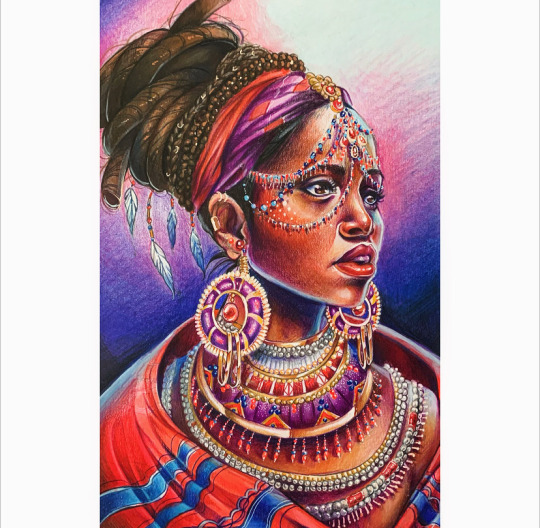
#illustration#commission#African woman#women of color#prisma colored pencil#arteza colored pencil#mixed media#traditional art#portrait#maasai#Maasai tribe#Kenya
21 notes
·
View notes
Text

5 notes
·
View notes
Text
11 notes
·
View notes
Text
History Shorts #8
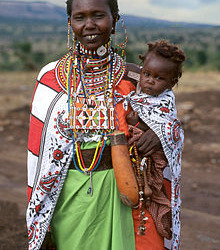
In 2001 Wilson Kimeli Naiyomah was studying in the United States at a university in California. During his time there the United States would experience one of it’s national tragedies known as 9/11.
9/11 was a terrorist attack against the nation that ended up with several hijacked planes crashlanding dangerously in several locations. The primary location spoken about and remembered in the US were the World Trade Center’s two towers. Over one thousand people died that day from the event alone.
Months later Kimeli headed home to Kenya. Kimeli was actually apart of the Maasai (Masai) people, a smaller nomadic ethnic group in Kenya. Upon returning home Kimeli told his people about what he witnessed in the United States.
They had heard about the disaster before, but it didn’t truly reach them until hearing it from one of their own. The Maasai people were so touched and saddened by the event that they decided to get together to send the United States a gift.
14 cows were given to a US ambassador as solidarity. Although it may not seem like an amazing gift to Americans, to the Maasai cows are incredibly sacred and are symbols of life.
The people of Manhattan were touched. but the United States was worried about transporting the cows and something going wrong. So the cows were kept in an US embassy in Kenya, were they still prosper to this day.
Kimeli worked with James Cloutier to make a commemorative painting. Which hangs in the 9/11 Memorial & Museum in New York. A copy also remains in Kenya.
#9/11#kenya#united states history#2000s#history#american history#art history#9/11 memorial & museum#wilson kimeli naiyomah#maasai tribe#maasai people#masai tribe#masai people#religious history#united states#kenyan history
3 notes
·
View notes
Text
On Safari Again, Pt. 1: Nairobi And Exploring Amboseli National Park, Kenya
0 notes
Link
The Maasai people represent a fascinating blend of tradition and modernity. You can see them walking the roads or tending to herds between safari parks.
0 notes
Link
0 notes
Text
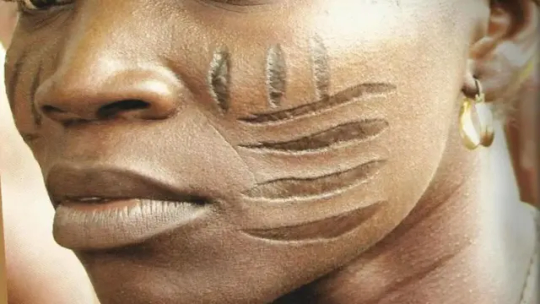
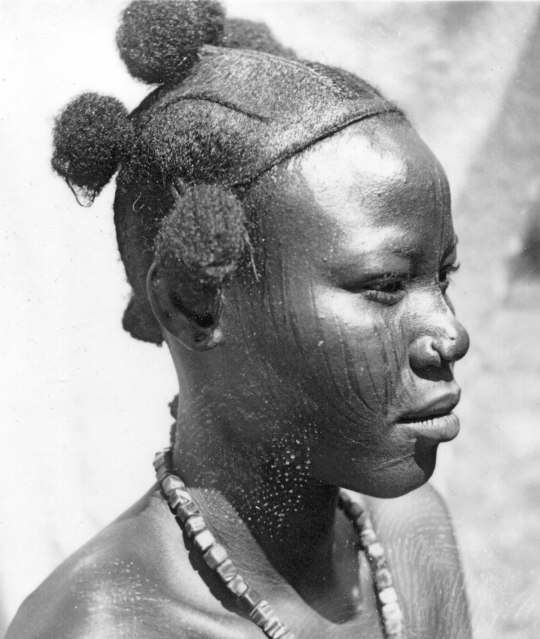
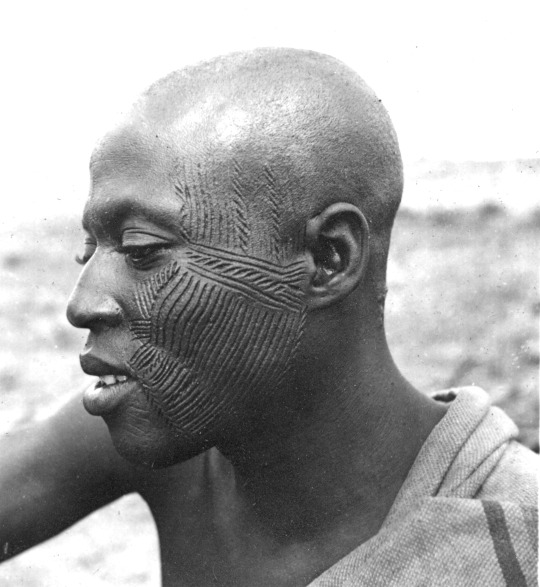
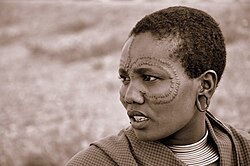
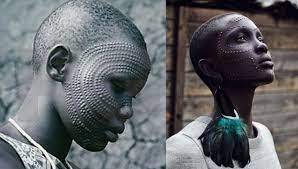
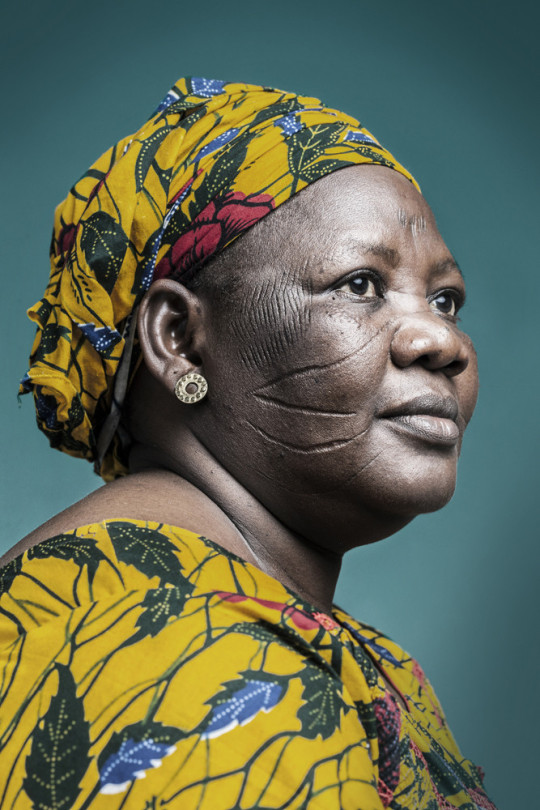
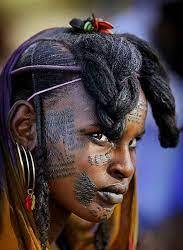

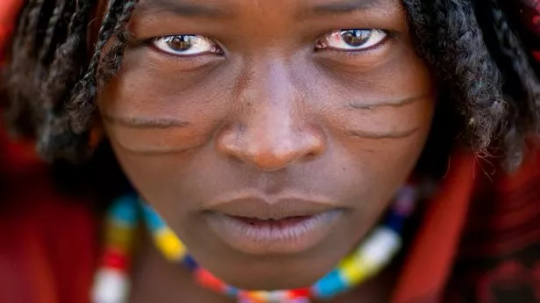
In Africa, European colonial governments and European Christian missionaries criminalized and stigmatized the cultural practices of tattooing and scarification; consequently, the practices underwent decline, ended, or continued to be performed as acts of resistance.
Among the ethnic groups in sub-Saharan Africa that traditionally practice scarification are the Gonja, Dagomba, Frafra, Mamprusi, Nanumba, Bali, Tɔfin, Bobo, Montol, Kofyar, Yoruba, and Tiv people of West Africa, and the Dinka, Nuer, Surma, Shilluk, Toposa, Moru, Bondei, Shambaa, Barabaig, and Maasai people of East Africa.
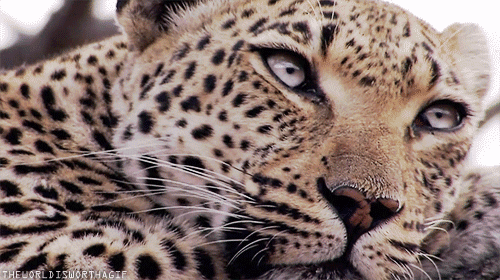
Traditionally, the most common reason for scarification has been as a rite of passage.
Scarification has been widely used by many West African tribes to mark milestone stages in both men and women's lives, such as puberty and marriage.
In many tribes, members unwilling to participate in scarification were generally not included in the group's activities, and are often shunned from their society.
According to anthropologist Grace Harris, group members lacking the normal characteristics consistent with the group are not considered as having acquired the full standing as agents in their society; they would also lack the capacity for meaningful behavior, such as greeting, commanding, and stating.
Therefore, scarification can transform partial tribe members into "normal" members entirely accepted by the group.
Scarification is a form of language not readily expressed, except through extensive and intricate greetings, and gives the ability to communicate fully, which is a key element for being considered as a normal member of the group.

One reason why scarification is used as confirmation of adulthood is how it shows the ability to endure pain. With young men, the endurance of the pain of scarring exhibits strength and discipline, especially in tribes where males have roles as hunters and warriors.
A young man who has already experienced the feeling of torn or cut flesh is considered less likely to fear the teeth of a wild animal or the tip of an enemy's spear.
In Ethiopia and Zambia, elaborate scarification is often done on women at puberty, used to denote a willingness to be a mother. The markings show that she can stand the pain of childbirth, as well as being an indication of her emotional maturity.
Some of these rites of passage have spiritual or religious roots, such young boys in the Chambri tribe of Papua New Guinea undergo scarification resembling crocodile scales to mark their transition into manhood, a ritual which stems from the belief that humans evolved from crocodiles.
In Ethiopia, Suri men scar their bodies to show that they have killed someone from an enemy tribe;
the Mursi practice scarification for largely aesthetic reasons in order to attract the opposite sex and enhance the tactile experience of sex.
The Ekoi of Nigeria believe that the scars serve, on their way to the afterlife, as money.
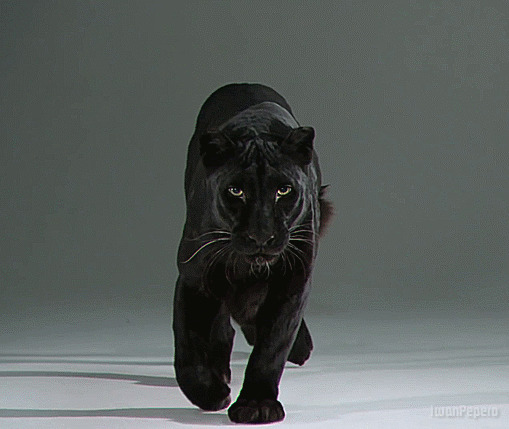
#ekoi#mursi#maasi#nigerian#scarification#african#afrakan#kemetic dreams#brownskin#brown skin#afrakans#africans#african culture#afrakan spirituality#suri#ethiopian#zambia#afterlife#sacrifice#free will#immortality#philosophy#chambri#rite of passage#tiv#Gonjas#Nanumbas#Dagombas#Frafras#ghana
216 notes
·
View notes
Text



The History of Dreadlocks
Ancient origins:
The origins of dreadlocks can be traced back to ancient cultures around the world. The earliest written evidence of dreadlocks dates back to between 2500 and 1500 BC: the God Shiva and his followers are described as jaTaa, meaning "wearing knots of tangled hair".
They are also found among ancient Egyptians, Buddhist monks in India, Māori warriors in New Zealand and Maasai tribes in East Africa, for example. For these cultures, dreadlocks were often a sign of spiritual connection, wisdom and belonging to a community.
But that’s not all! In Mexico, a Mesoamerican people wore dreadlocks between the 14th and 16th centuries. Among the Wolofs in Senegal, locks were worn by kings and the Tiedo warrior class. Celtic and Viking peoples also wore them. In short, dreadlocks have been adopted by many peoples around the world for thousands of years.
The Rastafari heritage:
One of the most famous associations with dreadlocks is the Rastafari movement, which originated in Jamaica in the 1930s. The term dreadlocks (first used in the 1950s) was considered derogatory, referring to Jamaica’s marginalised poor people. For Rastafarians, dreadlocks are more than just a hairstyle; they are a symbol of devotion to spirituality and nature. Rastafarians see dreadlocks as a way of letting their hair grow naturally, in keeping with their belief in the sacred nature of life.
A Declaration of Freedom:
Over the years, dreadlocks have also become a statement of freedom and resistance to the beauty standards imposed by society. For many people, wearing dreadlocks is a way of rejecting ideals of conformity and celebrating their individuality. Dreadlocks allow individuals to express their authenticity and stand out from the crowd.
A political motivation:
The popularity of reggae and Bob Marley boosted interest in dreads worldwide during the 1970s and 80s. At the time, Rasta philosophy had a strong resonance for young Afro-Americans. Like Afro hairstyles, dreadlocks took on social and political implications: a way of valuing black cultures against Eurocentrism.

In conclusion, the history of dreadlocks is deeply rooted in culture, spirituality and self-expression. This iconic hairstyle has crossed eras and borders, becoming a symbol of resistance, freedom and a celebration of diversity. Whatever the reason people choose to wear dreadlocks, it’s important to recognise and respect the deep cultural and spiritual significance that surrounds them.
#black is beautiful#black is gold#black is divine#black history#history#dreadlocks#locs#beautiful#black people#melanin#hairstyle#interesting#facts#black culture#pro black#black power#black excellence#gorgeous#dark skin#beautiful people#ebony#beauty#natural hair#natural beauty#black beauty#black tumblr
22 notes
·
View notes
Text




Lip rings worn by Ethiopian women of the Maasai tribe
#body modification#ethiopia#maasai#africa#african#ethiopian#piercing#anthropology#geography#folk costume
44 notes
·
View notes
Text
The Maasai warriors Via @fernando_anuanga…..IG
#africa #african #maasai #afrique #africanamazing #exploreafrica #tribe #culture #heritage #dance #maasaiwarriors #kenya #kenya #kenyafashion #blog #travelblog #explore
65 notes
·
View notes
Text
[Going to Kenya] was eye opening. It was obviously the most inspiring place to do field research on mammals because they have the most iconic species out there but also a really great place to take a deep dive into human-wildlife conflict because we were living in an area that was within the territory of the Maasai tribe who are local pastoralists indigenous to the area and had constant conflict with wildlife. Previous to that I was taught like, “Oh, people who are killing wildlife are just really selfish people and we gotta put the wildlife first - some of them are endangered species, can’t afford that,” and ignoring the whole social aspects of that. And so it was a really great opportunity to understand why the social injustices the Maasai were facing and why they were retaliating against the animals that were damaging their crops or using it as a way to send a message to the government that was treating the wildlife better than their tribal communities and giving the wildlife access to water and not the tribes access to water to survive, to feed their cattle, et cetera.
(…) The professors that worked there and taught us all our courses were local Kenyans that had a non traditional route to their careers. A lot of them started late in their lives, had a lot of obstacles, came from extreme poverty, had nobody in their families who did anything remotely similar to them. These local Kenyans - professors - had this unique skill to not only study the wildlife they grew up around but also to talk to the local community members and really share how these wildlife species are relevant to their lives, important to their lives, are worth coexisting with because they’re part of those tribes. They grew up in those areas and they have that local knowledge that someone dropped in from America or Europe would not have.
— Golden State Naturalist Podcast, “Urban Ecology with Miguel Ordeñana (Part 1: P-22 Mountain Lion, Wallis Annenberg Wildlife Crossing, and Other Urban Carnivores)”
#human-wildlife conflict#conservation#ecology#ecofascism#kenya#indigenous peoples#indigenous rights#mine
24 notes
·
View notes
Text

A maasai barbecue during one of their traditional ceremonies.
1 note
·
View note
Text




























Australia. Maasai. Part 2
We left the desert and found the nearest settlement We were welcomed by the Maasai tribe. They gave us their clothes and lit a fire so that we could warm up. Anderii @anderii cooked a delicious dinner. The next day, the Maasai showed us "honey ants", introduced us to tame kangaroos and their rabbits. But we did not abuse their hospitality. It was time to get ready for the road.
#sweater dress#Angora Sweater#sweater girl#fuzzy sweater#wool sweater#turtleneck sweater#mohair sweater#fluffy sweater#turtleneck#fluffy dress#wool dress#Fuzzy Dress#mohair dress#angora dress#fluffy girl#corset#leggings#fuzzy leggins#tight leggins#stockings#mohair stockings#fluffy stockings
10 notes
·
View notes
Text

Head Guide, Naserian ©naserianbarbrah (23 years old), is one of the many trailblazing women at Emboo River. From a recent interview:
"I’m from the Maasai tribe, and was interested in the wild animals from childhood and wondered if there was a way to protect and preserve them. Research suggested that guiding would be the best route. When I turned 18, I joined the Koiyaki Guiding School, where I learned how to identify different birds, animals and plants, as well as about the geographical terrain. I also learned computer skills and how to drive..."
"In the Maasai community, girls aren’t expected to go to school – our role is to get married, have babies. I had to sneak out the home to attend primary school (...) and a friend of my teacher sponsored my fees at Koiyaki Guiding School. My father and I fell out for a bit but he unexpectedly attended my graduation, and told me he was very proud of me."
@invertedhighfives I love this so much
11 notes
·
View notes
Text


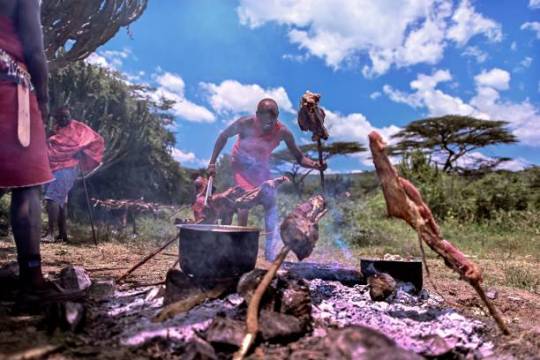
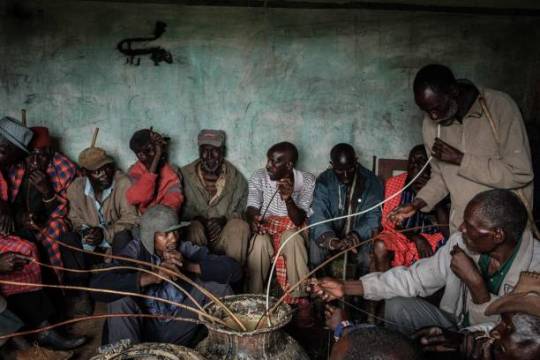
🌍 The Enriching Journey of the Maasai Tribe
The Maasai tribe is a significant community with a unique history. They originated from South Sudan, belonging to the Nilotic ethnic group. Due to unfavorable conditions for livestock farming, they were compelled to migrate in search of grazing land and water for their animals. On their journey, they passed through various regions, including the Ethiopian Highlands and the Great Rift Valley, eventually settling in the fertile lands of the Serengeti and Maasai Mara. Along the way, they encountered various indigenous communities, such as the Samburu, Kikuyu, and Luo, which contributed to the distinctiveness of the Maasai culture.
Today, the Maasai primarily live in Kenya and Tanzania, with an estimated population of around 1 million. They are divided into approximately 16 clans, with the Purko and Loita clans in Kenya and the Parakuyo clan in Tanzania being the most influential in terms of historical impact and size. Despite their geographical separation, the Maasai maintain a shared culture that binds them together.
In Kenya, the Maasai lead a semi-nomadic lifestyle, which contrasts with the more settled Maasai in Tanzania, who now engage in both farming and livestock herding. Their unique identity is immediately visible through their attire. In Kenya, they wear red shukas (blankets) adorned with intricate beadwork, while in Tanzania, the Maasai often wear blue and purple shukas. These variations in attire symbolize their unity in diversity.
Visiting the Maasai offers a unique learning experience. You can participate in their traditional dances, such as the adumu or jumping dance, and listen to elders recount stories of their origins. You will also have the chance to taste their traditional foods, like ugali (maize porridge), traditional drink (known as amarula –a mixture of fresh cow’s milk and cow blood), meat, and milk. Importantly, you will learn about their traditional herbal medicine practices, known as mitishamba. Examples include esititi, used for dental care, various herbs for treating malaria, and other plants for digestive health and body detoxification.
The Maasai tribe offers invaluable lessons in resilience, sustainability, and the importance of cultural heritage. This brief glimpse into their rich history and vibrant culture is just a taste of what this remarkable community has to offer.
✨ Resilience, Unity, and Cultural Heritage -The Maasai Way ✨
For more insight and information on cultural tours and safari experiences, follow us!
8 notes
·
View notes